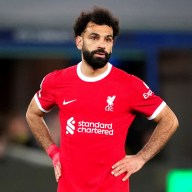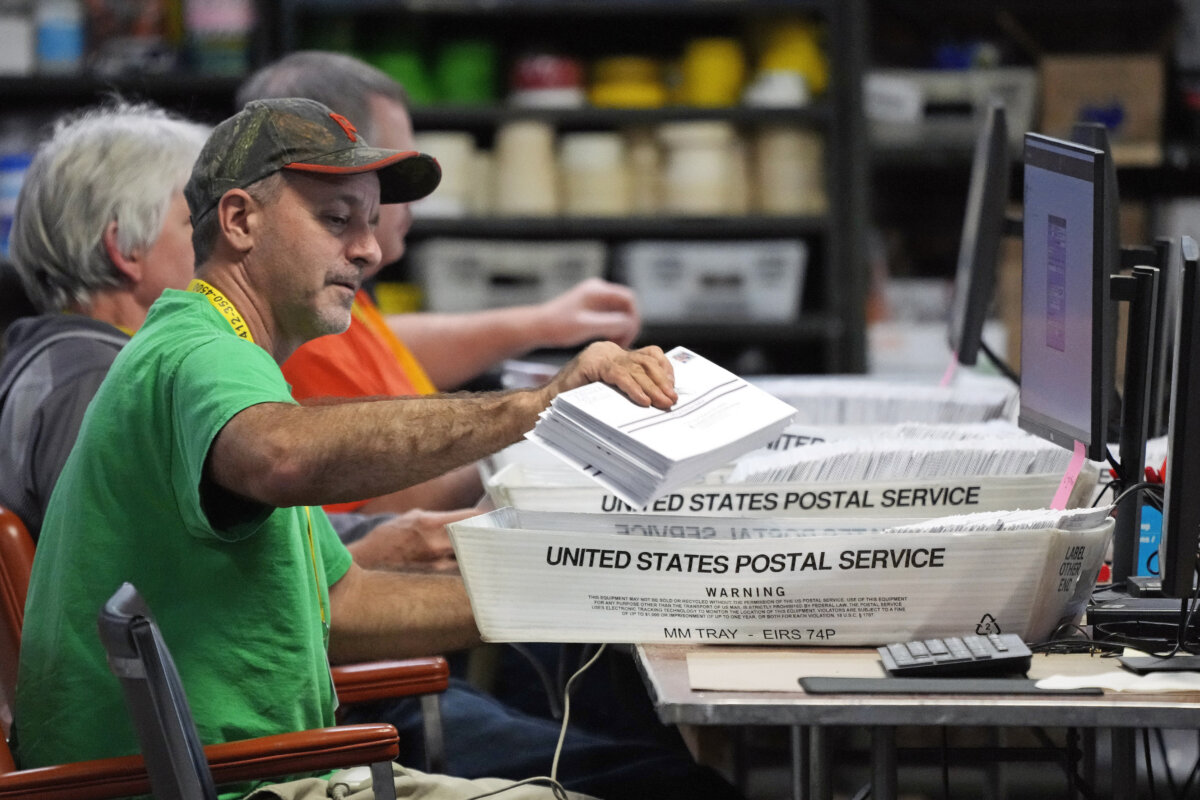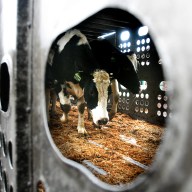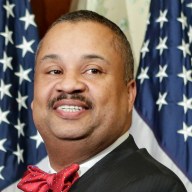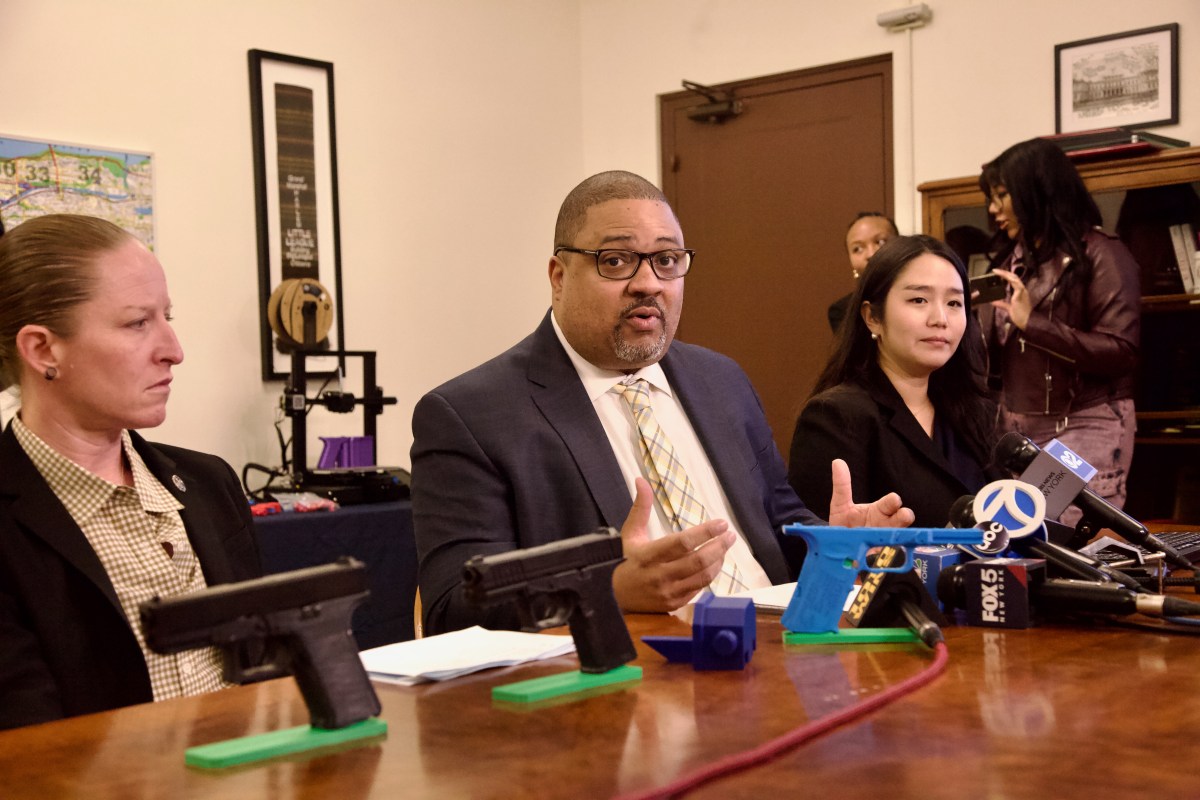In transferring these epic works from the page to the screen here, have you had to make many changes?
Well, of course, I didn’t actually do it. So the challenges here were largely those faced by the show runners and the screenwriters, David Benioff and D.B. Weiss.
But they have done quite a faithful adaptation, I think. There are differences certainly, you know? They’ve added a few new scenes. They’ve cut things, scenes here and there and, you know, certainly lines.
In any sort of television or film adaptation, you don’t have the space that you have in prose. But for the most part, … it is my story and it’s the same characters and the same principle major events.
I think my fans are going to be very happy with how faithful it is. Most of the changes I’ve seen are clearly been made just to accommodate the budget, accommodate the limits of running time.
These things are inevitable when you’re doing a television show. You can’t have every episode run for four hours as much as you would like to and that’s what it would really require to get every little bit that’s in the novels up onto the screen.
I keep reading all over the place about how, you know, you started writing these books because they were unfilmable, and you wanted to go to amazing places like this. Well, now, it’s been filmed. Are you kind of, like, still pinching yourself?
I am, actually. Sometimes I think I’ve fallen through a rabbit hole and I’m in Wonderland here. It’s amazing not only that they could film, but, of course, the amount of attention that they’re getting. And, you know, the cast that we’ve assembled, the global thing, it’s all – has me – has me pinching myself.
There’s a part of me that still is almost saying, No, don’t get – don’t believe it too much. It’ll all – when you wake up, it’ll all turn out to have been a dream.
Were there specific scenes from the book that you thought were going to be particularly impossible to translate on the screen?
Well, certainly some of the larger scenes and major battles and things like that. So it will be interesting to see when we get to those.
We have, I believe, three major battles in the first book. Even there I don’t present them all on stage. One of them we just hear about a battle, a messenger comes in. But there’s at least one of those battles that’s presented full on in the book.
And then in the second book, we have a gigantic battle. But we’ll have to worry about that second season. And if we do get a second season, David and Dan have already told me that I’ll be writing that in my episode.
So I will have to deal with the question of what we can do. You know, some of the special effects thing I was very interested to see how they did the – how they did the wall, how they did some of the other major castles like Winterfell and the Red Cape at King’s Landing, et cetera, and those so far look gorgeous.
Could you lay out for us how big of a participant you were in putting this on?
I’m going to be writing one episode per season if the show goes forward. There’s part of me that would like to write more than one episode per season, but I have to finish the books and the books, of course, are enormous and they take a lot of time.
I’ve been working on this last one for more than five years and I’m only now, you know, at the end of that. And then there’s two more beyond that. So “Dance With Dragons” will come out on July 12th, but I’ve got to go pretty quickly and start the next book, “The Winds of Winter.”
Otherwise, of course, the great fears that the show will eventually catch up with me which I can’t have. So as much as I’d like to be more involved and do more scripts, I think I’m at a level of involvement that I’m very comfortable with.
I do feel quite involved with the show. I’ve talked to Dan and David quite frequently. I’ve been a part of all the casting. I’ve seen all of the audition tapes and I weigh in with my opinions.
Of course, I’m just one voice among many voices, but I do feel I have a legitimate voice in who gets cast in these roles. I’m very happy with my level of involvement.
What are your thoughts on aging up many of these characters?
Well, we did age up the characters, and partly this is the difference between prose and film and television, you know?
When writing the books, I did a lot of research into the Middle Ages and, of course, life spans were a lot shorter back then and maturity came on a lot more quickly.
They did not have through most of that period the whole concept we have of teenagers or a period called adolescence that falls between childhood and adulthood.
The cultural thing is you were a child and then at some point you became an adult and it was frequently a right of passage to celebrate that, you know? And we still have remnants of that in the Catholic confirmation or the Jewish bar mitzvah both of which take place at 13 and are supposed to represent you becoming an adult.
But it – we don’t actually honor that anymore. We – you know, we still give kids confirmations and bar mitzvahs, but they can’t then go out and vote and drink and get married.
So we’ve changed since then and writing a medieval fantasy, I structured the ages of many of the characters based on actual medieval history. But when you’re translating to film for modern audience, you know, for one thing there are laws and they differ in many countries about what you can do in terms of some of the more adult contents with actors of certain ages.
We were filming in England. So we had to be cognizant of the British laws and also of the laws in the United States where it will principally be shown. So a number of the characters were aged up.
I think Danny is 13 when the books begin and in the TV series she’s 17 and she’s being played by a actress who’s actually 23 or something like that, I believe.
And, of course, the older actors tend to be older too. I mean, [Ed] and [Robert] were in their early mid-30s in the books and they’re being played by actors who are in there, I guess, late 40s or early 50s. I don’t know the exact ages of [Sean Bean] or [Mark Addy].
But actually, I think that translates fairly well because a man in his mid-30s, in the Middle Ages was a man that had seen a lot of hard living. The life spans were shorter. The lives were more brutal in some ways and people tended to age faster.
So I think a 35-year-old in the 12th Century and a 50-year-old in the 21st Century are probably pretty much equivalent. So I’m pretty happy with the changes that were made.
I think – I don’t think it’s going to impact on the story in any significant way.
Were there any characters in particular that sort of surprised in the way the script was written or the actors’ portrayal?
Well, I’m very happy with the cast. I think they’re all – you know, we’ve got some really good people there. The only casting that really, I guess, surprised me in a sense was a smaller role, the role of [Osha] who is being played by [Natalia Tena].
When I first saw her audition tape, when I went to the site, my first reaction just seeing her picture and, of course, being familiar with her work from the Harry Potter films was, you know, why are they bringing in this actress?
She’s way too young and too pretty for the role as I had written it in the books which was an older woman, very kind of leathery and hard-bitten who had lived her life in the woods and all that.
And then I watched Natalia’s audition and she was just mesmerizing. She was fantastic. She blew all the other people who had auditioned for that role off the screen.
So I said, “Yes, it’s got to be her,” but that’s caused me to rethink that role a little and, you know, that character kind of disappears, but I’ve always intended it was going to come back in the future books.
And I think now more so than ever when I want to bring [Osha] back, I know we have such a terrific actor playing her, but I’ll probably write her a little differently and give her some more to do with that in mind.
But that’s really the only case where the actor has departed from, you know, what I had in mind in the books or what I described in the books, but departed it in a very positive way, I think.
I think their [Osha] is more interesting than the [Osha] that I wrote.
Damon Lindelof, the creator of “Lost” had a few choice words after he heard that you compared having a bad sort of rushed conclusion to a series as doing a “Lost.” Do you have a response to him because he was a little miffed to say the least.
Historically, most television shows have not had any endings at all. In fact, the networks for decades have discouraged shows from having an ending because the theory, at least when I worked in television a lot in the – back in the ’80s, the theory was that if you gave your show an ending it would not syndicate as well.
And the example that was always thrown out was, “The Fugitive,” the classic show with David Janssen, which actually had an ending where Richard Kimbel catches the one-armed man.
And then it was always felt that, “The Fugitive” did not syndicate well because people knew how it ended. Well, shows like “Gunsmoke” or, you know, “Bonanza” or something that had no particular ending, they just stopped at some point, would syndicate more strongly.
So I think we’re getting away from that now. We’re getting shows that actually have – they’re sort of, like, novels done for television whether it be over one season or over 20 seasons and they do have a beginning and middle and end.
They have a strong continuity, but there are still kind of problems to resolve. It’s difficult to end a show well particularly in the context of American television.
British television always did it better, I think, because you would know going in how many episodes you would have. You would have a show like, “I, Claudius” where they would order 13 episodes and you’d be doing a series and would have 13 episodes and at the end of it, you would have an end.
American shows, they put it on the air in many cases and you don’t know are you going to have three episodes and then your ratings are poor and you get yanked off or are you going to be expected to run for 12 years.
It’s quite challenging to any creator to, you know – if you don’t know how many hours you have and you don’t know what your situation is to pace a show adequately to have an ending as opposed to just being the typical episodic show.
All that being the case, of course, in the case of “Game of Thrones” we’re in a somewhat different position because David and Dan are following the books and the books are – the story has grown, but I’m still planning on doing it in seven books, admittedly seven gigantic masses of bug crusher books here.
So thousands and thousands of pages, but at the end there will be an end just as there is a beginning and a middle. And presumably, the show will end the same way the books will end.
So that’s what we’re moving toward.
What do you think of the opening credits?
I think they’re great actually. And I did notice that the credits for the second episode were different from the first and it delighted me, you know?
One of the things that become very common for epic fantasy ever since Tolkien is the inclusion of a map in the book. And when you’re dealing with an imaginary world, I think that map is very important because geography is very important. The land, the setting becomes a character in many epic fantasies and Tolkien really set the stage for that when he created, “Middle Earth.”
It’s often struck me that back in the 1960s when I was in college and the Tolkien books really had their first grade popularity among college students in that era, many people had a Lord of the Rings poster on their wall.
And what did that poster show? It did not show Frodo or Bilbo or Aragorn or any of the characters from it. It was a map of Middle Earth that they sold hundreds and thousands of copies of – and that really signified that, you know, it’s the setting. The land is very important.
Now, you don’t need a map if you’re writing historical fiction. We know where most readers presumably know where France is, they know where England is.
But when you’re dealing with a secondary world, my readers don’t know where Pentos is or where the Wall or King’s Landing are, or the relationship of these places.
So bringing in the map like that and making it part of such an exciting and visually interesting credits, I think, really will help ground viewers and particularly viewers who maybe aren’t fantasy readers or are unaccustomed to books set in what Tolkien called, “The secondary world, the secondary universe.”
So I’m very pleased with the credits. They’re gorgeous too – they’re lovely to look at.
Has anything you’ve seen in the series made you think, “Boy, I wish I had thought of that?”
Some of the set designs were interesting and I’ve commented before on the high hall of the Arryns in the Eyrie. It’s quite different from what I had described in the books.
In the books, it’s basically a rectangular hall with a series of pillars and we have the Moon Door which is set in an external wall and you open the door and there’s a 600-foot drop below it.
And, of course, what they actually built on the paint hall in Belfast was much more round because they had basically a square space. So they put a round hall in it with two magnificent curving staircases going up either side and the throne positioned at the top of the staircases and they put the Moon Door — instead of being in a wall, they put it in the floor with a winch mechanism that kind of opens it and closes it rather than just an ordinary door.
And I thought all of that was very interesting. If I had thought of that, I might’ve gone that way. Certainly to look at their version of the high hall is more interesting than my version.
Why do you think this is happening now? Why is it possible right now?
Well, of course, remember, I began these books in 1991 and I was coming out of three years on “Beauty and the Beast” and two years on “Twilight Zone.”
I’d done some development. I was doing my own pilots. Things have changed considerably since then in terms of technology. We can – we can do things particularly with computer animation that we could not actually do back in the late ’80s and early ’90s.
I remember one episode that I wrote for “Beauty and the Beast” that they were having a large feast scene and, you know, we wanted a lot of people in this feast. And the way to get that was to hire a lot of extras. So the episode turned out to be quite expensive. We went over budget.
And you couldn’t do a really massive scene. You couldn’t do battles with thousands of people being involved inside. You couldn’t do a scene in an arena with thousands of people looking on because you would’ve needed thousands of people.
Today, of course, they do it all with computer animation. So you look at the difference of the Roman gladiatorial scenes between what a show like, “I, Claudius” could do back in the ’70s and what a show like “Spartacus” can do today filling out their arenas with computer animation.
And, of course, the other thing is that we’re doing this with HBO and the budget that we have is significantly greater than the budget that I had on any of the network shows that I worked on back in the – back in the ’80s and early ’90s.
Is there anything that’s in the scenes that you’ve seen or in the episodes that you’ve seen that was really a huge ‘wow’ moment for you?
I think the Wall was the biggest wow moment for me. The Wall is perhaps the setting that is most iconic for my books. It’s the one that everybody remembers and it’s the one that no other fantasy series really has, you know? All fantasies seem to have big medieval kind of cities and tall towers and, you know, caves and all of that stuff that Tolkien kind of established. The Wall is uniquely mine and I was very anxious that it come out well.
David or Dan, I don’t remember which, said you were a savage God who did terrible things to your characters. And I wondered if you had any remorse or regret for anything you’ve done to your characters?
Yes. Well, I don’t have any remorse or regret, but those chapters are hard to write. I know some of my readers may find them hard to read and I’m particularly thinking of the sequence in the third book – the red wedding which some of you may be familiar with.
That was actually probably the hardest thing I ever had to write? It occurs about two-thirds of the way through the book, but it was the last thing I wrote for that book and that’s a gigantic book.
And when I reached that chapter, I just couldn’t make myself write it. I kind of skipped over and I wrote the chapters that came after it and the aftermath and I had the entire book done.
And then I had to kind of mash my teeth and do a back hand and write that. So it was emotionally wrenching for me as a writer just as it is I hope for readers.
But to my mind, that’s what fiction is all about – you want to engage the reader or the viewer on an emotional level. You want them to care about the characters, to share their ups and downs.
And when there’s a death, you want it to be something painful. Death is hard. That should be hard.
Sometimes you see characters who maybe didn’t interact because of that tight point of view that you were talking about earlier…
Yes, it’s been, you know – I haven’t read all the scripts. I read the pilot way back a million years ago and I saw some of the episode-by-episode breakdowns of what would be during the first season.
And then I think I saw a couple of the later drafts of the pilot and possibly some other scripts, but I did not, you know, read every draft of every script.
But based on what I’ve seen so far, I’ve liked the additional scenes, and I understand having worked in television myself why some of them are necessary.
As a novelist, I have tools that are not available to Dan and David, you know? I am inside my character’s heads. I can reveal things, you know, simply by having characters think about them.
I can reveal things in the text or by my character remembers something and – well, you can’t – how are you going to do that in a television show unless you do voiceovers or something.
The techniques are very clumsy. You have to bring this stuff out and dialogue. You have to create new scenes to establish things or the reader’s going to get very lost and confused especially in something as complicated as a “Game of Thrones.”
And the series does have a lot of characters. The relationships between the characters are very complex. There’s a lot of back-story that has to be established.
Will you be making a cameo?
I had a cameo in the first pilot. I appeared as a Pentoshian nobleman in Danny’s wedding scene. And I had a gigantic hat and a large set of balls that were hanging around my neck.
It was a very flamboyant costume and I kind of stood in the background. And they did a couple of quick shots of me, but it just was part of the sequences that were filmed in Morocco all of which had been cut.
Of course, when we – when we recast and reshot, I think all of the Morocco footage went out and the scene – their wedding scene was done instead on a new location in Malta and I wasn’t around for that.
But it was fun and yes, I’d love to do another cameo speaking at a certain point.

